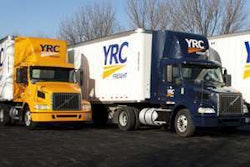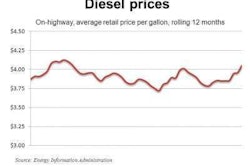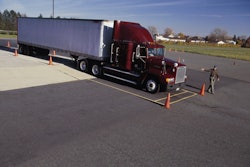In an event designed to showcase the advances in clean diesel technology spurred largely due to stringent emissions standards and regulations established by the State of California and its Air Resources Board, diesel industry and CARB officials held a press conference on Tuesday, Feb. 28, to highlight the key policies and events that led to the transformation of clean diesel technology. The press conference and daylong exhibition of today’s clean diesel engines were held outside the Cal-EPA building in downtown Sacramento.
“Today’s diesel engines emit about 90 percent less of these pollutants than they did when we first started this effort,” said Mary Nichols, CARB chairman said. “And while we still have work to do – especially in turning over the fleet of older vehicles that are out there on the roads – the fact is that we’ve seen actual air quality improving, especially around our ports where we first started the effort to really turn over the fleet.”
Allen Schaeffer, executive director of the Diesel Technology Forum, highlighted the major advancements in clean diesel technology. “Today we come together to recognize a fundamental transformation of an industry to a new technology –clean diesel – the most advanced diesel engines, ultra-low sulfur diesel fuels and advanced emissions control technology,” Schaeffer said.
Schaeffer said that according to CARB, from 1990 through 2015, fine particulate matter (PM2.5) from heavy-duty diesel trucks will have declined by nearly 74 percent and from non-road construction machines by 63 percent and 73 percent in farm equipment. Oxides of nitrogen will have declined by 21 percent in heavy-duty trucks, 52 percent in non-road construction equipment and 65 percent in farm equipment.
In addition, Schaeffer said that today in California, more fine particles come from brake and tire wear than from all on-road diesel engines. He added that because of these major advances, it would take 60 of today’s new diesel trucks to equal the particulate emissions of just one truck made in 1988. “Over a decade ago, the diesel industry was challenged to fundamentally transform its technology to meet near-zero emissions levels,” Schaeffer said.
“Many thought it could not be done, but today proves what can happen when America’s diesel engineers and equipment makers roll up their sleeves and get to work,” he said. “Meeting these emissions challenges has delivered tangible benefits to air quality and public health and will continue to pay dividends in the months and years ahead as more of the new generation technology replaces the old. But these accomplishments represented here today have also now positioned diesel as a key technology as a key player in a sustainable future here in California and around the world.”
Schaeffer said the next challenges involve retaining clean air progress while improving efficiency and lowering GHG emissions, and exploring more advanced fuels. “It’s a very big challenge and is the next chapter in the clean diesel story,” he said. “Early results are encouraging – these new 2012 truck engines are not only nea-zero emissions, but they are also up to 10 or 12 percent more energy-efficient.”
In addition to the press conference, a special outdoor technology showcase event included numerous examples of most modern clean diesel technology, including:
• Heavy-duty truck and engine technology from Cummins Inc., Detroit, Mack Trucks and Volvo Penta;
• Light-duty pickup trucks from GM and a Ram with a Cummins 6.7L Turbo Diesel;
• Advanced emissions control technology from Cummins, Donaldson, MTU and Volvo Penta; and
• The latest generation of agriculture and construction equipment from Caterpillar, John Deere and Agco.
“Today we’re marking another transformation in the industry – engines that offer our customers superior performance at near zero emissions,” said Tana Utley, Caterpillar chief technology officer and vice president of product development and global technology.
“Effective environmental regulations can only be developed through a strong partnership between government and industry, and that’s what you see here today,” said Dr. John Wall, Cummins vice president and chief technical officer. “Cummins has always been committed to working with the Air Resources Board, the EPA and with other emissions regulators to support a clear, consistent, challenging and enforceable process that recognizes the needs of business and provides incentives for companies to create innovative technologies as well as jobs in this country. We also recognize that these new technologies must work well in the hands of our customers.”













